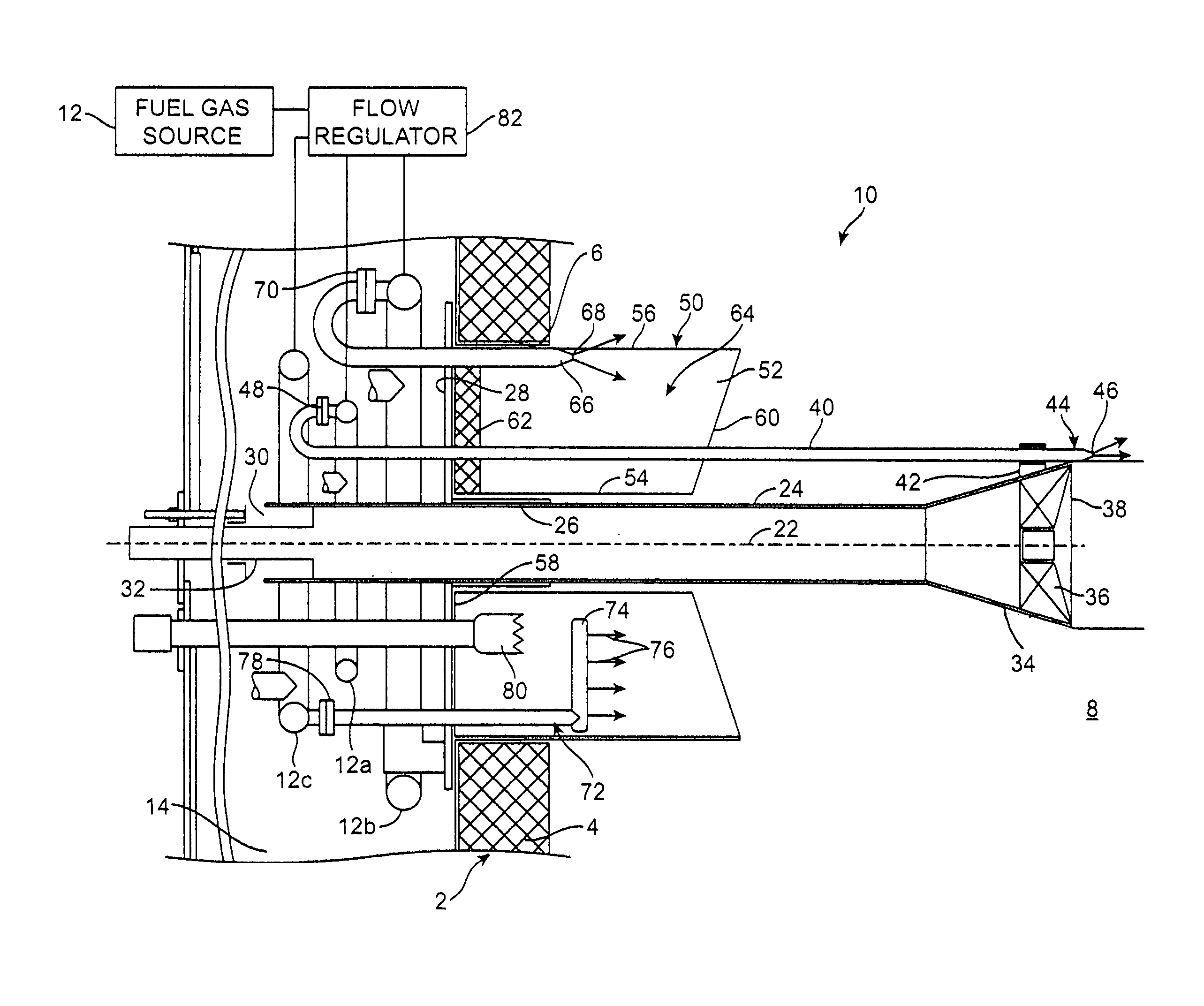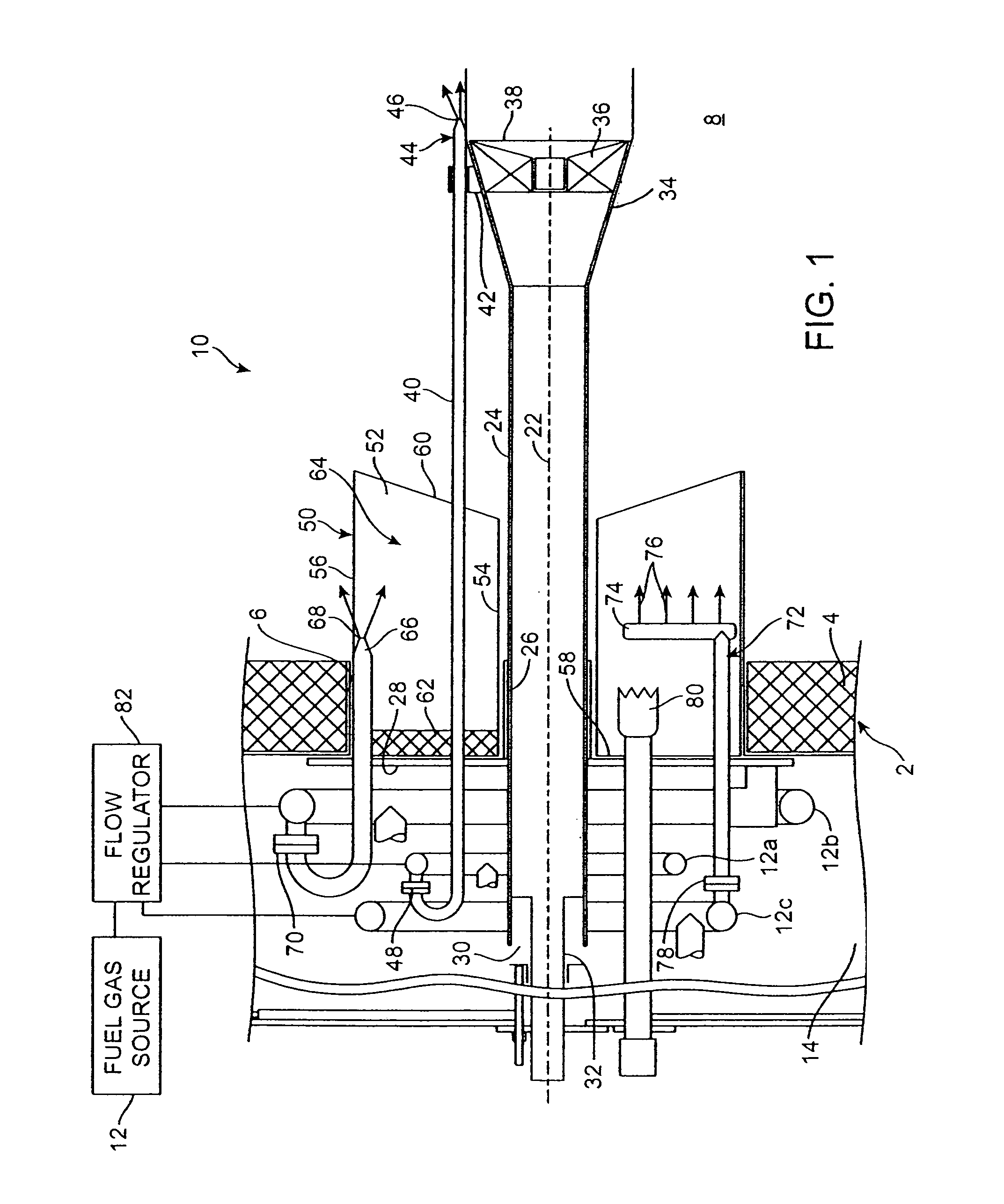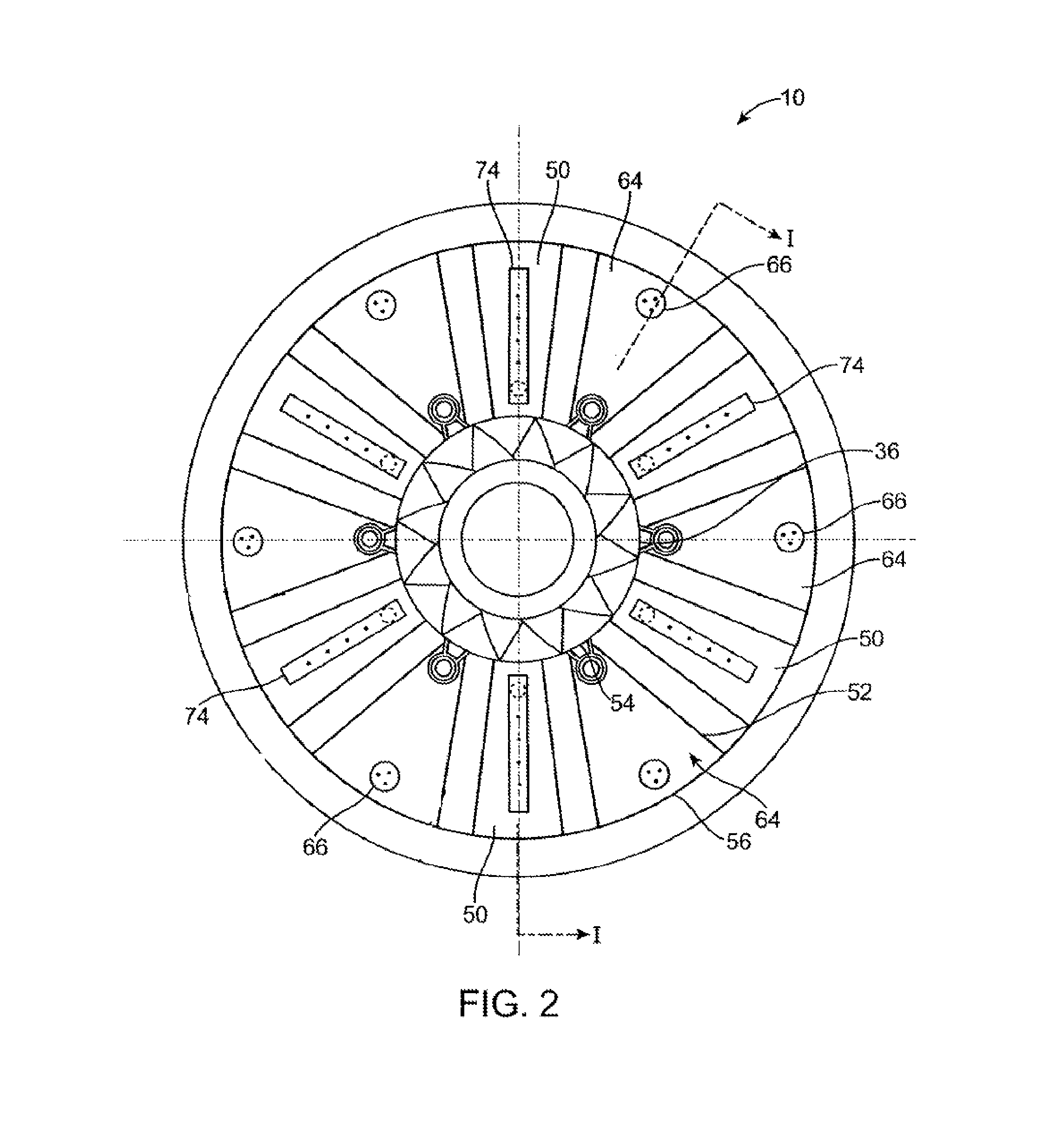Low NO.sub.x burner
a burner and burner technology, applied in the direction of gaseous fuel burners, combustion types, lighting and heating apparatus, etc., can solve the problems of increasing the overall volume of gas that must be transported, increasing initial installation costs as well as subsequent operation and maintenance costs, and reducing the flow velocity of gases. , the effect of stabilizing the flame at the spinner
- Summary
- Abstract
- Description
- Claims
- Application Information
AI Technical Summary
Benefits of technology
Problems solved by technology
Method used
Image
Examples
Embodiment Construction
[0024]Referring to the drawings, a furnace 2 has a front wall 4 with an opening 6 that provides access into a combustion chamber 8 inside the furnace. A low NOx burner 10 constructed in accordance with the present invention extends through opening 6 into the combustion chamber of furnace 2, where it forms a flame 84 for generating heat. For example, the furnace may be a boiler that generates steam.
[0025]A fuel gas supply 12 and a combustion air supply 90 are suitably coupled to windbox 14 attached to furnace front wall 4. The burner directs the fuel and the combustion air into the combustion chamber, where they are mixed, ignited and combusted, thereby releasing heat energy and generating high temperature furnace gases which are typically discharged into a convection section 16 of the furnace where temperature is reduced, typically to a range between about 200-400° F. The cooled flue gas is discharged to the atmosphere through a stack 20. As will be explained in more detail later, a...
PUM
 Login to View More
Login to View More Abstract
Description
Claims
Application Information
 Login to View More
Login to View More - R&D
- Intellectual Property
- Life Sciences
- Materials
- Tech Scout
- Unparalleled Data Quality
- Higher Quality Content
- 60% Fewer Hallucinations
Browse by: Latest US Patents, China's latest patents, Technical Efficacy Thesaurus, Application Domain, Technology Topic, Popular Technical Reports.
© 2025 PatSnap. All rights reserved.Legal|Privacy policy|Modern Slavery Act Transparency Statement|Sitemap|About US| Contact US: help@patsnap.com



